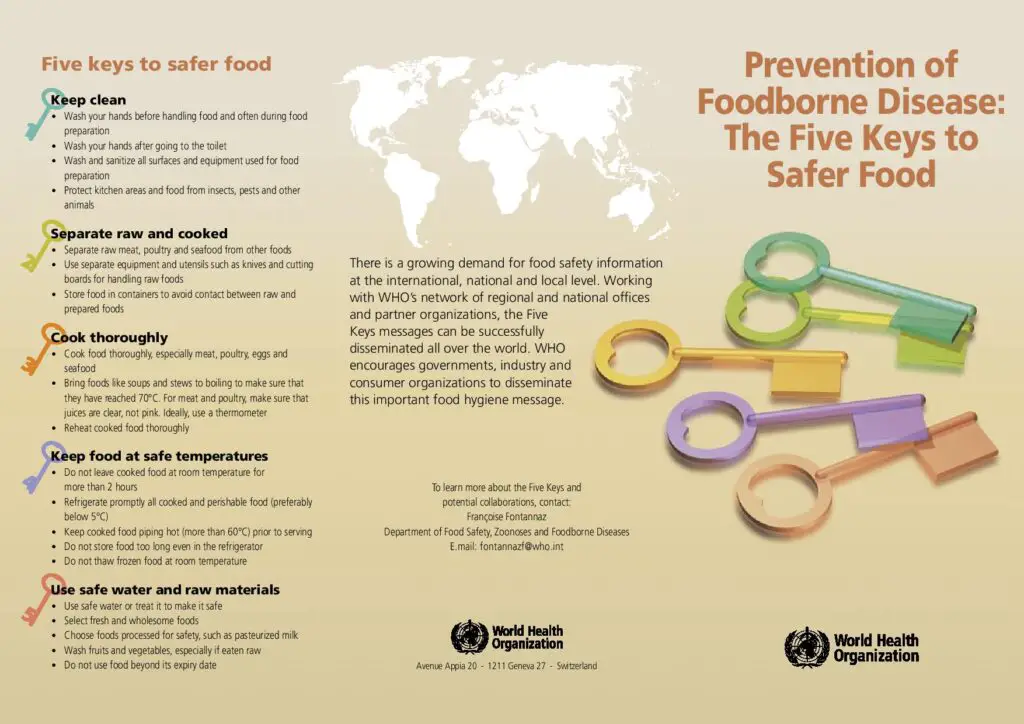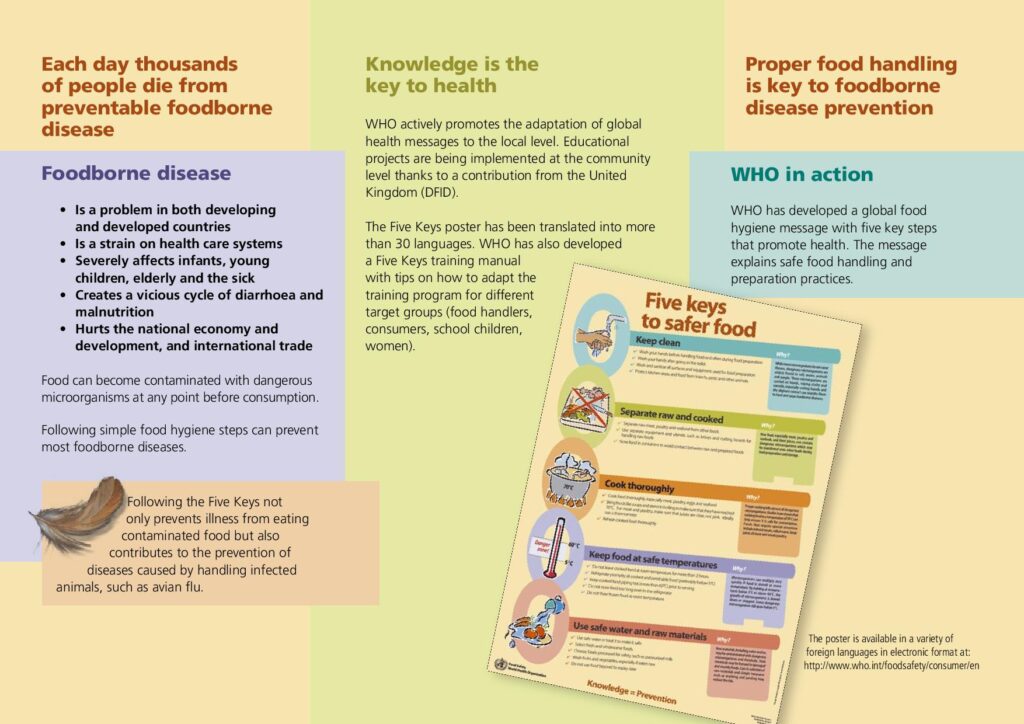Food safety is extremely important to prevent food-borne illness.
Food-borne illnesses can cause a variety of symptoms. For small children, older adults, and people with weakened immune systems, symptoms can be severe and even life-threatening.
The cause of most food-borne illness is bacteria. Some of these bacteria are E. coli, salmonella, Staphylococcus aureus, and Clostridium botulinum.
You can prevent most food-borne illnesses when you know and use proper ways to handle, store, and prepare food.
Buy and Store Food Safely
- Do not buy food in damaged packages or cans.
- Look for expiration dates on food packages. Do not buy outdated foods.
- Buy only pasteurized milk, cheese, ciders, and juices.
- Keep raw meat, poultry, and fish in a separate shopping bag. This prevents the juice from dripping onto other food.
- Place perishable foods in the refrigerator or freezer right away after grocery shopping.
Prepare Food Safely
- Wash your hands with hot soapy water before and after you prepare foods.
- Thaw food in the refrigerator or microwave oven, not on the kitchen counter.
- If possible, have 2 cutting boards. Use 1 cutting board for raw meat, poultry, and seafood, and use the other cutting board or fresh fruits and vegetables.If you have only 1 cutting board, prepare fruits and vegetables first, and put them safely out of the way. Wash the cutting board very well with soap and hot water. Then prepare the raw meat, poultry, or seafood. When finished, wash the cutting board again.
- Cook foods thoroughly to kill harmful bacteria.
- Use a thermometer to check that meat and poultry are completely cooked. Cook to an internal temperature of:
- At least 145 F for roasts and steaks
- 180 F for whole poultry
- At least 160 F for ground beef
- Cook fish until it is opaque and flakes easily with a fork.
- Cook eggs until the white and yolk are firm.
Store Leftover Food Safely
- Keep hot foods hot and cold foods cold. For a cold food like pudding, do not let it sit out at room temperature — keep it cold in the refrigerator. When a roast turkey is done, do not store it on the countertop at room temperature — keep it hot (or freeze or refrigerate leftovers). Remember: This rule also applies to foods packed for lunches, picnics, and camping.
- Keep your refrigerator temperature at 40 F to 45 F. Keep your freezer at 0 F.
- Refrigerate leftovers as soon as possible.
- For quick cooling in the refrigerator or freezer, divide large portions of leftovers into small bags or containers.
- Date leftovers, and use them within 3 to 5 days.
- Leftovers should be reheated to 165 F.
Food Storage Times
Safe storage times for refrigerator and freezer are suggested in the list of foods below:
| Food Stored | Refrigerator Time | Freezer Time |
|---|---|---|
| Meat (raw) | 3 to 5 days | 6 to 12 months |
| Meat (cooked) | 3 to 4 days | 2 to 3 months |
| Ground meats (raw) | 1 to 2 days | 3 to 4 months |
| Ground meats (cooked) | 3 to 4 days | 2 to 3 months |
| Poultry (raw) | 1 to 2 days | 9 months (parts) 1 year (whole) |
| Poultry (cooked) | 3 to 4 days | 4 to 6 months |
| Lunch meats (open package) | 3 to 5 days | 1 to 2 months (freezer wrap) |
| Fish (raw) | 1 to 2 days | Up to 6 months |
| Fish (cooked) | 3 to 4 days | 4 to 6 months |
| Eggs in shell (raw) | 4 to 5 weeks | Do not freeze |
| Eggs in shell (hard cooked) | 1 week | Do not freeze |
| Milk | A few days past “sell by” date | Do not freeze |
| Cheese (hard, semi-hard) | 3 to 4 weeks | Can freeze (changes taste and texture) |
- DO NOT leave perishable, cooked food at room temperature longer than 2 hours.
- Remove the stuffing from poultry and meat. Refrigerate them in separate containers.
- To be safe, discard moldy food.




